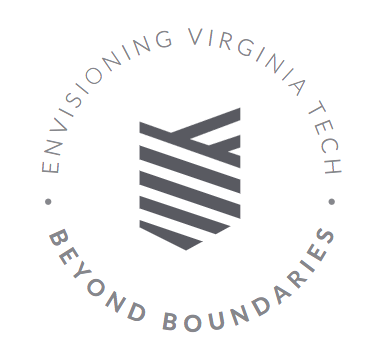Virginia Tech President Tim Sands reflects on the 2015-16 academic year

As the 2015-16 academic year draws to a close, I feel compelled to reflect on what I believe was a pivotal year in Virginia Tech’s history. It was a year of rediscovering our core values by looking far into the future, of personal transitions, and Hokies coming home. It was a year of reflection, action, and building partnerships. Like every year in Virginia Tech’s past, we launched graduates into lives and careers that will make a difference in this world.
Commencement was just a few days ago, and I think we will remember it, and those we honored, for many years to come. Professor Marc Edwards, Dr. Mona Hanna-Attisha, and their team demonstrated perseverance and focus in invoking an engaged science approach to the water crisis in Flint, Michigan. Through their work, the world witnessed an indelible example of the unflinching application of Ut Prosim (That I May Serve) in improving the human condition. The students and postdoctoral fellows who worked directly with the citizens of Flint have been transformed through this experiential learning opportunity. They now know that their dedication to mastering a discipline and learning to work in a diverse team has meaning beyond certification for employment. May we all come to understand the power of focusing on improving the lives of others as a guide for our life and career decisions, large and small.
We also honored Irving Peddrew III, the first black student to attend any historically all-white, four-year public institution in the 11 former states of the Confederacy. Arriving in Blacksburg in 1953, Mr. Peddrew faced a campus and a community that were not ready for him, presenting obstacles to everyday living that would have discouraged anyone else from staying a week, much less three years. Although he relocated to California before completing his degree, Irving Peddrew’s courage had opened the door for successive generations of black students. In recognition of his personal achievements and the important role he had in Virginia Tech’s history, we awarded Mr. Peddrew with an honorary bachelor of science degree in electrical engineering, only the ninth honorary degree awarded by Virginia Tech in its 144-year history.
While we learn from our past, looking forward was the theme of this academic year. With the launch of “Envisioning Virginia Tech – Beyond Boundaries,” the university community accepted my challenge to envision Virginia Tech a generation from now, without regard to the constraints of the present that suppress our imagination. A wealth of concepts, ideas, and aspirations rolled out of town hall meetings, online discussions, and informal gatherings. In the true spirit of Virginia Tech, I learned that visioning, planning, and implementation are not necessarily sequential stages! Beyond Boundaries has already impacted our day-to-day decisions. Constructs such as the VT-Shaped Student, our commitment to InclusiveVT, Destination Areas, and Innovation Districts are already actionable.
Our work aligned with one of the most significant General Assembly sessions for higher education in recent years. The commonwealth was able to begin reinvesting in education, allowing Virginia Tech to impose the smallest percentage increase in tuition and fees of this century. The governor, his administration, the General Assembly, business leaders, and our research universities also found common ground around cross-sector partnerships that will catalyze a stronger and more resilient Virginia economy. The Virginia Research Investment Fund, GOVirginia, and capital bonding authority for the next phase of our Virginia Tech - Carilion Clinic partnership in Roanoke testify to this shared commitment to build more vibrant regional economies. My earlier message outlines significant investment the commonwealth has made in support of our institution.
The steady growth in our infrastructure parallels the long-term growth of the student body. The entering class in the fall of 2015 was our largest ever, coinciding with a record number of applicants. Higher than expected yield (ratio of matriculated to admitted students) combined with the delayed opening of Pearson Hall presented some challenges, but we managed through crowded residence halls and dining facilities until the opening of Pearson in November. A more manageable 2-3 percent rate of growth over the next several years will bring our undergraduate enrollment to about 30,000. Why grow at all? I firmly believe that Virginia Tech’s forward-looking land-grant mission is aligned with the emerging needs of Virginia, the nation, and the world. As demand increases, we must find a way to provide a Virginia Tech education to more students from Virginia and around the world. With the implementation of Beyond Boundaries initiatives, the relevance and value of a Virginia Tech education will continue to grow.
There are many more highlights, milestones, and stories I could share from this year – too many to detail here. If you take a moment to peruse our Virginia Tech News Archives, you will find our faculty, staff, students, and alumni have excelled in every regard, and they continue seeking new ways to make a difference in the lives of others.
As we look towards the 2016-17 academic year, we will be welcoming more than 8,000 new Hokies to Virginia Tech. We will see further progress in integrating experiential learning into our curricula, building innovation hubs and districts on our campuses and in our communities, and engaging the world through our scholarship and outreach in the spirit of Ut Prosim.
Go Hokies!
Tim Sands
@VTSandsman








